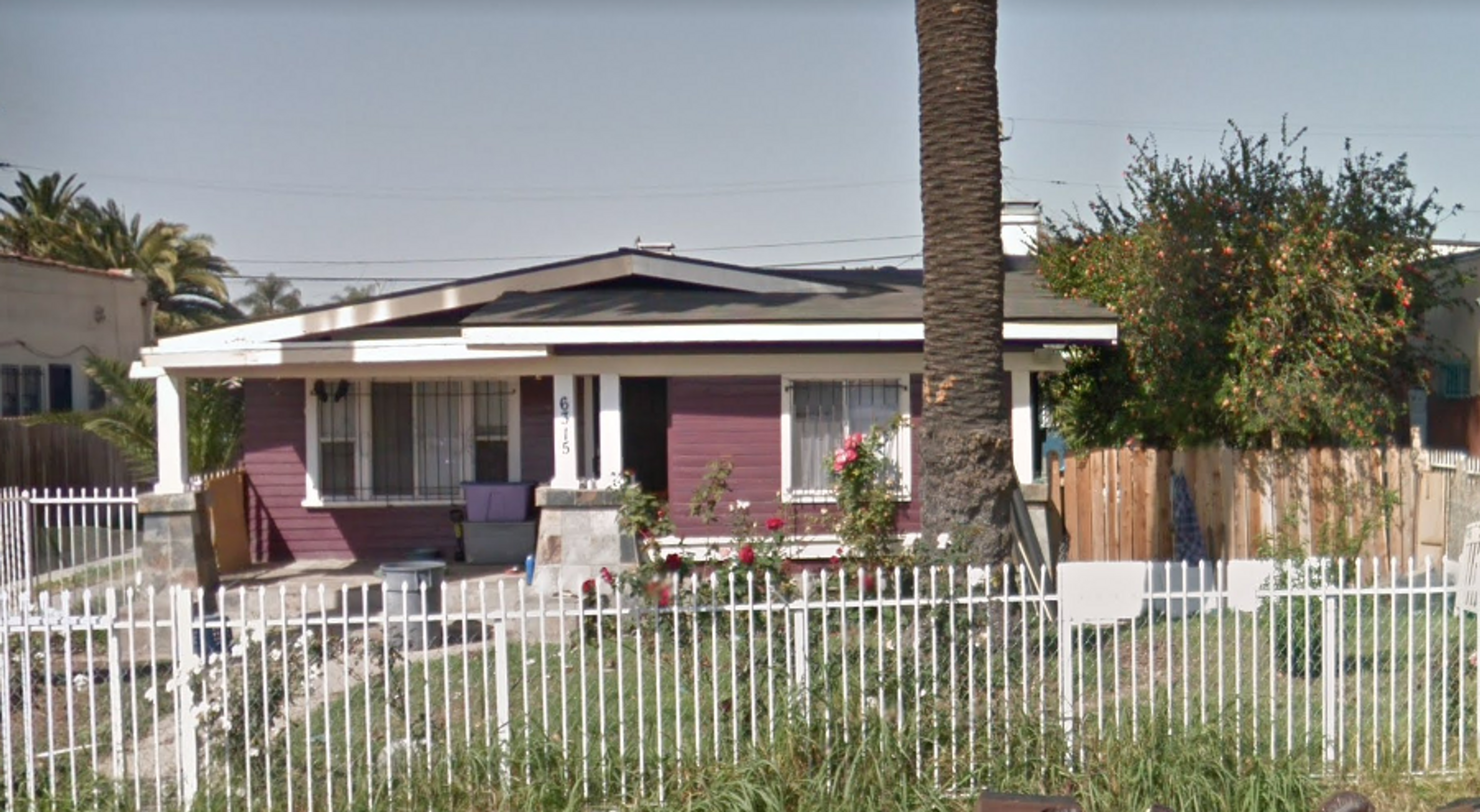There's a cute little 1912 bungalow down at 6315 South Brynhurst Avenue, in the Hyde Park tract of Park Mesa Heights—
This is exactly the kind of house a YIMBY loves to hate. The classic California bungalow—with front yard, a porch for sitting in the evenings, a backyard for an orange tree and your barbeque—absolutely emblematic of our shared collective memory and indispensable to our Angelenic nature, and it has heritage trees!
So we're taking in the tranquil atmosphere of our little bungalow friend when all of a sudden—
KILL IT KILL IT KILL IT!!!! ejaculate a herd of frenzied, frothing, jackbooted YIMBYs, jerking and jiggling while dark lord Scott Wiener pulls their strings.
BWA HA HA HA HA! guffaw a gaggle of drooling developers, extending bony index fingers at...the bungalow's neighbor! GASP! There's ALSO a 1928 MISSION REVIVAL BUNGALOW COURT RIGHT NEXT DOOR!
KILL IT KILL IT KILL IT!!!! they scream and scream and scream and scream until the wailing descends into an orgy of destruction as the assembled begin defiling all things beautiful, twirling and writhing in a debauch of bloodlust and madness!
DEATH! they all scream in unison! DEATH! DEATH! DEATH! they chant, kicking their hooves together in a cackling cacophony of unholy terror!
All at once the little bungalow and courtyard housing explode into a great orange fireball, rising impossibly high into the heavens so as to singe the Heavenly Father, while the beasts writhe and gyrate atop a mountain of flaming white oak flooring!
And then they built this.
Whereupon God, bloodied but unbowed, singed but unsullied, gazed upon creation with heavy heart.
About Nathan Marsak
NATHAN MARSAK says: “I came to praise Los Angeles, not to bury her. And yet developers, City Hall and social reformers work in concert to effect wholesale demolition, removing the human scale of my town, tossing its charm into a landfill. The least I can do is memorialize in real time those places worth noting, as they slide inexorably into memory. In college I studied under Banham. I learned to love Los Angeles via Reyner’s teachings (and came to abjure Mike Davis and his lurid, fanciful, laughably-researched assertions). In grad school I focused on visionary urbanism and technological utopianism—so while some may find the premise of preserving communities so much ill-considered reactionary twaddle, at least I have a background in the other side. Anyway, I moved to Los Angeles, and began to document. I drove about shooting neon signs. I put endless miles across the Plains of Id on the old Packard as part of the 1947project; when Kim Cooper blogged about some bad lunch meat in Compton, I drove down to there to check on the scene of the crime (never via freeway—you can’t really learn Los Angeles unless you study her from the surface streets). But in short order one landmark after another disappeared. Few demolitions are as contentious or high profile as the Ambassador or Parker Center; rather, it is all the little houses and commercial buildings the social engineers are desperate to destroy in the name of the Greater Good. The fabric of our city is woven together by communities and neighborhoods who no longer have a say in their zoning or planning so it’s important to shine a light on these vanishing treasures, now, before the remarkable character of our city is wiped away like a stain from a countertop. (But Nathan, you say, it’s just this one house—no, it isn’t. Principiis obsta, finem respice.) And who knows, one might even be saved. Excelsior!””
Nathan’s blogs are: Bunker Hill Los Angeles, RIP Los Angeles & On Bunker Hill.
